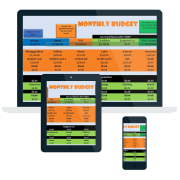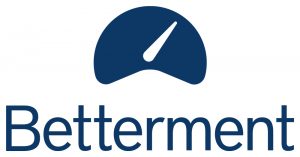What are your thoughts about retirement? Once I started paying attention to the money within our family budget, I started asking myself these questions:
- When should I start saving for retirement?
- How much should I be setting aside?
- How much would I need at retirement?
- How would I get there?
Let me share some “fun facts” for you:
The Huffington Post recently reported approximately 33% of people have nothing set aside for retirement and roughly 60% of people nearing retirement have less than $25,000 set aside.
The Motley Fool says the average American will retire with $22,000 per year if including social security and self directed retirements such as 401(k)s and IRAs.
Reuters did a study that determined over half of the working class earning less than $40,000 per year say they never plan on making it to retirement.
Hmmmmm…..I think it’s safe to say that overall we suck at saving for retirement. This changes right now.
It’s Time to Wake Up!
I share the facts above to scare you a little bit. Well, I am actually trying to scare the hell out of you! It’s time to wake up to reality.
To the American People: The Government is Not going to save you in retirement.
To the Rest of the World: I highly doubt your Government is coming to the rescue either.
Where Should You Start?
When you are thinking about building your own financial legacy, we can think about it in terms of a building a financial house.
When building a house, you first need to build the foundation. Once the foundation is set, then you can start building the walls, the roof, the chimney, and every little thing that goes inside your financial house.
However, the most common thing I see from my students is they are trying to do it all at once and therefore not seeing any real progress. In a nutshell, they are building the roof and chimney before they even have the foundation set.
Related: FREE Training – Stop Living Paycheck to Paycheck….and Just Live
Try This
Add up all of your current debt payments you make each month. Car payments, credit cards, student loans, personal loans, your mortgage(s), and anything else you can think of. Take that number and plug it into my investment calculator here. This will show you the opportunity cost of your debt. Hint: This may be painful…
Let Me See It!
First things First
Before you start saving for retirement, you need to have a foundation set. I always recommend having the very basics in place before investing. By basics, I am talking about your Emergency Fund and all of your debt (except mortgage) paid off.
My Emergency Fund Before Investing?
One hundred percent yes for everyone. There isn’t a gray area here and your case isn’t special. Everyone needs to be saving for a starter emergency fund BEFORE they start investing for retirement.
If you currently don’t have at least $1,000 – $2,000 set aside for emergencies and you’re investing, I recommend holding off on any future investments until you have some sort of cushion between you and the next disaster to enter your life.
Yes, I know you want to invest, but I promise you the time it takes you to stop investing while you save up this little emergency fund is not going to make or break your financial future. However, a $2,000 emergency when you don’t have $10 in the bank will be felt. No bueno.
Note: I also recommend holding off on investing until you have fully funded your emergency fund of 3 – 6 months, but read on to the 2 year rule below.
Related: 5 Simple Steps to Building Your Emergency Fund
My Debt Paid Off Before Investing?
Yes, you also read that correctly. In order for you to have a comfortable retirement, you need to invest more than you currently think possible. When you have your money tied up in payments to the bank, you’re robbing yourself of your best tool for building wealth – your income!
Therefore, I want you to have all of your debt gone (except your mortgage) BEFORE you start investing.
The 2 Year Rule
This is where your situation may be a special situation. Here it is:
If you can pay off your debt and/or finish your emergency fund in 2 years or less, then you can temporarily stop your retirement investing while you’re cleaning up your financial picture.
However, if you have debt that is going to take you a looooooong time to pay off, then you have to be investing during this period.
Example:
I had a client come to me with $175,000 of student loan debt. If you are wondering, she is a doctor (thank God), and she didn’t think it would be a good idea to hold off investing while paying off this giant amount of debt. She was right.
We created a plan for her to first build her emergency fund. She is a doctor, so that was really quick for her.
Next, she started her Debt Snowball and her investing simultaneously. This is where she looked at the opportunity cost of balancing how much went towards paying off debt and how much went towards her snowball.
Related: Debt Snowball vs Debt Avalanche
Debt Payoff vs Investing
If you’re finding yourself in the 2 year or more window, then you need to look at the Opportunity Cost of how much time to pay off your debt vs amount you could be investing.
For example: Let’s say you have $500 inside your monthly budget to either 100% throw at debt or invest. You could look at doing a $100/$400 vs a $250/$250 split to see the cost of taking longer to pay off debt versus what you expect to gain inside your retirement.
The truth is this: there isn’t a magic formula because you’re really taking an educated guess on what your retirement investing is going to do. The important thing to realize is you are well ahead of where you ever were before because you are creating a plan and implementing it. You’re not looking to be perfect, just looking for consistent action in the right direction.
It always starts with a Budget
Send Me the Budget

You’re not going to take a road trip without a fuel gauge, so don’t go through life just guessing on where your money is going. Instead have a plan that tells your money what to do…like investing for your future.
Investing Once You’re Debt Free
This is the fun part because your hard work has paid off and now you get to save like you never thought possible. If you are someone who likes hard and fast rules, then I recommend starting at 15% of your gross income (not including any company match) set aside for retirement investing. This is the minimum and should go up from there.
Why the 15% Rule?
Great question and to tell you the truth, I really don’t know where the 15% rule came from and I don’t know if anyone really knows either.
I will say that 15% is a great place to start from and increase from there. If you are 25 years old making $40,000/year, and you invest 15% of that until age 65, you would have $3.1 million to live off of at age 65! This number is based on you never earning a penny more for 40 straight years and an average return of 10%.
However, if you are 45 rather than 25, and you’re getting started, then the 15% rule is going to be a little low for you. Using the same scenario from above without the the 20 year head start will land you $382,000 at age 65. However, if you were able to invest 30%, you’d be looking at $765,000 at age 65. Huge difference, right?
So as you can see, 15% is a great place to start from.
Note: If you are investing 15% into retirement and you’re without any debt, then you are well ahead of the rest of society. Congratulations, you are no longer normal.
Related Post: Even a Loser Should Retire a Millionaire
What Should I Invest into First?
Let’s make this simple. This is the order I recommend:
- Any Company Match (401(k), 403(b), 457, ROTH 401(k), etc.)
- ROTH IRA
- Anything left over max out 401(k), 403(b), 457, ROTH 401(k), etc.
- Anything left over (congrats), but you need to start talking to your Financial Planning Professional 🙂
Example 1:
Your household income is $50,000 and you are going to start with 15%, which is $7,500 per year to be invested.
Therefore, where should you put this $7,500?
- Your employer offers up to a 3% match in your 401(k). This uses up $1,500 of your $7,500 to invest.
- Your ROTH IRA can hold up to $5,500 therefore now using up $7,000 of your $7,500 to invest
- You add $500/year to your 401(k) resulting in a total of $7,500 allocated to your annual investing for retirement.
Example 2:
Your household income is $250,000/year and you are going to start with 15%, which is $37,500 per year to be invested.
- Your employer offers up to a 3% match in your 401(k). This uses up $7,500 of your $37,500 to invest.
- Your ROTH IRA can hold up to $5,500, which uses up $13,000 of your $37,500.***
- You can go back and max out your 401(k) with $3,000 which takes you to $16,000 of your $37,500 to invest. (Your $7,500, the company’s match of $7,500, your $3,000 totals to $18,000)
- You can invest outside of tax favored retirement accounts
- You could invest outside of mutual funds, ex. Real Estate
- You can be really creative here 🙂
*** Due to the high income in this example, this person would be ineligible to participate in a ROTH IRA. However, there is a way to back door into a ROTH IRA for high income earners. You should contact your CPA to fully understand how to do this.
Related Article: Back Door into a ROTH IRA
 No Trade Fees.
No Trade Fees.
Not Trasaction Fees.
Save up to 6x on all Fees.
Betterment
What About Self Employment?
You have some really great options here, and you actually have the ability to save more than the employees in the above scenario.
- Solo 401(k) – You can contribute up to $18,000 tax deferred in 2016 and up to a total of $53,000 if you’re the owner of the company. This is my first choice for self-employed.
- SEP IRA – Another great option allowing you to contribute 25% of your net earning up to a total of $53,000 in 2016. This is my second choice for most people.
- SIMPLE IRA – This is a great option if you plan on hiring employees and offering a retirement incentive. Be careful with this one however because it can lock you into making 3% contributions to all of your employees. This is my third choice.
Note: Don’t forget you also have the option of adding in a ROTH IRA in addtion to your first three options above.
Related: Guide to Self Employment Options for Investing
What About Pensions?
Should You Include Your Pension in the 15%?
Let’s say your pension currently has you adding 10% of your gross income into the pension system. Since this 10% is for retirement, then one may say Yes, this is part of the 15%.
However, I look at it a little differently and here is why:
Just like anything in life, pensions have the good and the bad.
The Good Part of Pensions
The return is guaranteed meaning you know exactly what to expect in retirement. There is a formula that your HR department can help you with that often is broken into years of service, age, and the amount you made during your time working for the company or organization.
The Bad Part of Pensions
It’s really not your money like your 401(k), 403(b), 457, or any other self-directed retirement option is. If the manager of the pension screws up, you may not be getting the pension you were guaranteed – just ask the airline pilots from 10-12 years ago.
Also, the pension dies when you die. Well, it goes to your spouse, and once they die, the pension is over. With a 401(k) for example, that money is yours and can be delegated to someone inside your Will, thus leaving your legacy behind to future generations.
Lastly, it’s no secret pensions are under attack. Corporations have for the most part done away with them for good and now the government agencies are under a constant battle to defend what they promised to their employees from day one.
On the opposite end are those who will argue pensions are no longer sustainable for taxpayers to help support during and after a down economy.
Whether you believe this to be right or wrong is merely interesting. The point is you have to take all of this into consideration for your own financial legacy.
Therefore, I will leave it up to you. You can include all of, some of, or none of your pension contribution into your own 15% rule. It’s your money, so the choice is yours.

Fun Fact: I currently am part of a pension as a firefighter and Andrea and I use one half of my pension contribution in our 15% calculation. We also now invest beyond the 15%.
The Bottom Line
If you fail to plan for retirement, it’s going to suck. Period. The government can’t even take care of themselves right now, so don’t think for a second they’re going to be there to help you.
You must roll up your sleeves and decide to take care of yourself. This means creating a plan of action and then implementing it. It’s up to you.
Sharing Time
Please help SHARE the KNOWLEDGE about building a financial future by sharing this article to your favorite social platform right here, and thanks for being awesome!
What About You?
Do you struggle with saving for retirement? Are you willing to stop your investing contribution while you get your financial house built the right way? Do you think you will have the retirement you truly want?
Leave me a comment below and tell me what your 2 biggest struggles are when it comes to investing in general or anything else that is on your mind from reading this post 🙂
-Chris Peach







5 Comments
Glad you mentioned the pension issue. My husband is in law enforcement so we contribute 3.5% for a state pension but considering they have altered it twice in the 4 years he’s been on we are not feeling secure with it. So we started a Roth IRA last year. At only 24 years old we are definitely in the minority, in fact we don’t know any one else on the force doing a separate contribution. It’s a hard payment to make but we don’t look at it as voluntary. We have big retirement dreams!
Hi Kayla,
You’re being proactive with your retirement which is exactly what wealthy people do! However, I don’t want you to think of your ROTH IRA as a payment, but rather an investment in yourself. Your future self will thank you for it…I promise!
Also, did you know you can also do a Spousal ROTH IRA? Something to think about 🙂 Nice job Kayla!
Very informative and I love the exercise of calculating the opportunity cost of debt. We did invest to get the employer’s match (which was particularly good at the time) before paying off our student loans, but were able to pay those off long before they were due.
Thanks for your comment Kalie!
Opportunity Cost is often forgot about or neglected because we don’t really see it or initially feel it. It’s similar to a really bad sun burn….you don’t realize it until much much later 🙂
This is why I added in the calculation so you can actually SEE it. And, seeing is often believing.
Thanks for reading!
Very informative post and sound advice on building an emergency fund FIRST. I began building my own emergency fund right after college, and began by deciding how much I needed to survive somewhat comfortably and then saved the rest of each paycheck. In addition to saving, I committed myself to contributing a minimum of 10% of my monthly net income to towards my IRA (I automated my account to auto-deduct my target amount for easier management). I have since saved up enough $ in my emergency fund to start working on a personal investment fund (outside of my savings and IRA). This way I have money put away to invest in new skills or anything else I want that will generate an ROI.